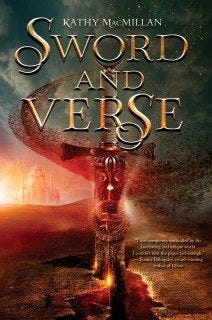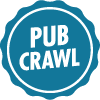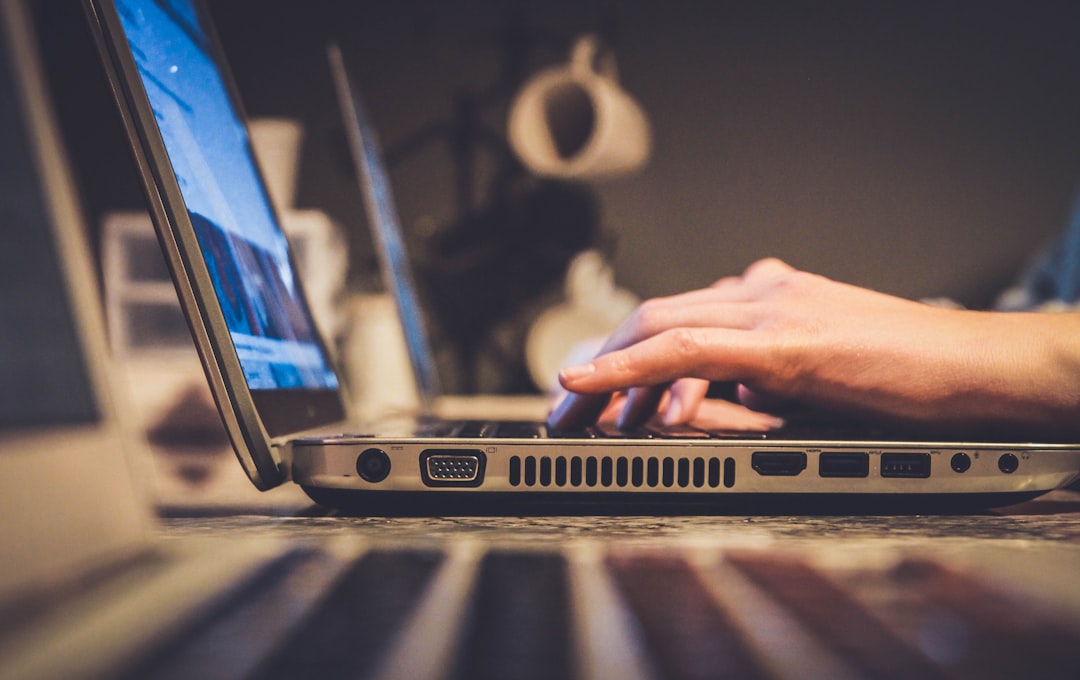
Working with Public Libraries: A Guide for Authors (Part Two of Two)
[box type="note"]Julie here! I am so excited to share the second part of a guest post from YA fantasy author Kathy MacMillan. Kathy's debut novel, Sword and Verse, will be published by HarperTeen/HarperCollins in January 2016. Kathy also has lots of experience working with libraries, and she is back to share her insights with us! This is part two of two, so if you missed it, make sure you check out part one of Kathy's tips for writers who want to work with libraries![/box]
In part one, we looked at book signings and other programs. But how do you pitch your program to a library?
Showcases: Some state and regional library associations run performer showcases, where local authors and performers who wish to present in libraries can share a brief taste of their programs (usually 10-15 minutes). Participating in a showcase is a great way to put your presentation in front of lots of librarian eyeballs (and sometimes school contacts as well). You will likely be presenting alongside magicians, mad scientists, and naturalists with adorable fuzzy creatures, so share the liveliest parts of your presentation!
No showcases in your area? Consider creating your own! Join forces with other authors, illustrators, or children’s performers and propose a free showcase session for your state or regional library conference. This is a win-win: you get to promote yourself, and the conference gets a free program. And of course, don’t forget to hand out bookmarks, postcards, or brochures with your contact and booking information!
What kind of program?: If you can tie your program into library initiatives, you will make it easier for librarians to say yes to booking you. Some major trends:
The Makerspace Movement: Providing hands-on spaces to create, with everything from 3-D printers and coding software to discarded books turned into art. This type of programming may be geared to children, teens, or adults. Check out this Library Journal article for an overview: http://www.thedigitalshift.com/2012/10/public-services/the-makings-of-maker-spaces-part-1-space-for-creation-not-just-consumption/
STEAM (Science, Technology, Engineering, Arts and Math): Public libraries are offering more programs with an explicit science focus, but they are also emphasizing the math, science, and technology elements found in traditional storytimes. This School Library Journal article gives a picture of what these programs look like: http://www.slj.com/2013/10/programs/full-steam-ahead-injecting-art-and-creativity-into-stem/#_
Early Literacy: This is not early reading – rather, it is the constellation of skills, such as print awareness, vocabulary knowledge, and the ability to apply real-world knowledge to a text, that prepares children for the tasks of reading and writing. Check out the American Library Association’s page on Early Literacy and Libraries for more information: http://www.ala.org/advocacy/literacy/earlyliteracy
A Word about Meeting Rooms: Library meeting rooms are often available for use by community groups. This can cause some confusion when writing organizations want to hold programs at the library. If you approach the library about “using the meeting room” for a program, you will likely be given the standard community group reservation policies, which often include a ban on selling anything during the program. However, if you approach the library requesting that it sponsor or co-sponsor a program, new doors are opened. When the library sponsors a program, book sales are usually allowed and the event will appear in the library’s publicity.
Partnering with Other Community Organizations: Bring extra value to your program by brainstorming ways to connect with schools, community groups, and local businesses. Erin Hagar, author of Julia Child: An Extraordinary Life in Words and Pictures (Duo Press) had a group of middle school students perform a skit about the famous chef at one of her signings. Find local businesses related to your book’s topic and ask them to help get the word out to their customers about your event, through print or social media. If you are traveling some distance for the event, offer a discount if the librarian helps connect you with local schools willing to host a presentation on the same day. Invite the local independent bookseller to sell books at your program. If you’re not sure where to start in contacting these local groups, ask your librarians – providing those resources is their job, after all!
Swag and Selling Books: The number of books you sell can vary wildly from library to library, and you can’t necessarily judge the effectiveness of the program by the number of books sold. Depending on the location, audience, and timing of your program, the audience may not be in the frame of mind to purchase a book. (Case in point: When my nonfiction book, Little Hands and Big Hands: Children and Adults Signing Together (Huron Street Press) came out, I did a mini-storytime featuring American Sign Language to promote it. In libraries where the program was scheduled in place of the regular weekly storytimes, I sold few books – often the parents would tell me that they hadn’t even brought their wallets, because they were in storytime-attendance mode.)
Make sure you have bookmarks or postcards to hand out to each attendee with information about your book and your website. That way, there is a chance that person may purchase the book later (or at least leave the bookmark on a restroom counter and someone else will see it!)
It’s important to clarify whether books can be sold during the event, and if so, who will be responsible for bringing and selling them. The Friends of the Library may be on hand to sell books, or the library may have a pre-existing relationship with a local independent bookseller.
If the library expects you to handle book sales, bring a friend or family member to handle sales so you can focus on signing, or contact a local bookseller yourself. Don’t forget to account for sales tax, and to report your direct sales as required by your state. The Small Business Association has a handy guide for collecting and reporting sales tax here: https://www.sba.gov/blogs/sales-tax-101-small-business-owners-and-online-retailers
Making the event go smoothly: Communication is key! Confirm the event in writing. If you set up the event with a central coordinator, then call the branch where you will be presenting a day or two before the program and find out who your in-person contact will be. Make sure that person knows when to expect you and has your cell phone number to contact you en route if necessary. This day-before call seems like a small thing, easy to overlook, but it is HUGE for creating rapport with your host and showing your professionalism.
During the event itself, be a good guest. Don’t be a diva, and communicate clearly about what you need for the program to go smoothly. Understand that your host may not be able to stay in the room the entire time because the library is short-staffed, or someone is vomiting in the children’s department, or there is a crisis at the circulation desk. (There’s always an adventure happening in a public library!)
Afterwards, send a thank you note to your host as well as to the contact person. Post pictures from the event on your website and social media and tag the library. (Do not post any photos that show faces of attendees unless you have their written permission!)
Keep a record of the staff you work with at each library, so that, when your next book comes out, you can send a personal note – and perhaps secure another invitation to present!
Other Ways to Connect With Public Libraries
Getting the library to carry your book: Most libraries have centralized Materials Selection specialists who develop the collection based on reviews, the library’s budget, and community needs. Even if your book is published by a major publisher and is reviewed in national journals, it’s a good idea to reach out to your local libraries and let them know that you live in the area.
If your book is published by a smaller press, or if you are self-published, then you may have a tougher time. Libraries rely on review sources such as Booklist, School Library Journal, and Publishers Weekly, and if you don’t have trade reviews to show them, they may not consider purchasing your book. Many libraries have established a process for local authors to submit one or more copies for the materials selectors to review.
Patrons can also request that the library carry certain books, and the more requests the library gets, the more likely it is to purchase the material. Enlist the aid of your supporters to make these requests at their local libraries.
Public libraries can be an author’s best friend! I hope these tips have given you some ideas on how to start connecting with libraries far and near.
Got more tips for working with libraries? Share them in the comments!
[hr]

KATHY MACMILLAN is a writer, American Sign Language interpreter, librarian, founder of The Sweet Sixteens (www.thesweetsixteens.com) and avowed Hufflepuff. Her debut young adult novel, Sword and Verse, is an epic fantasy that explores questions of power and prejudice. Find her at www.kathymacmillan.com and on Twitter at @kathys_quill.







